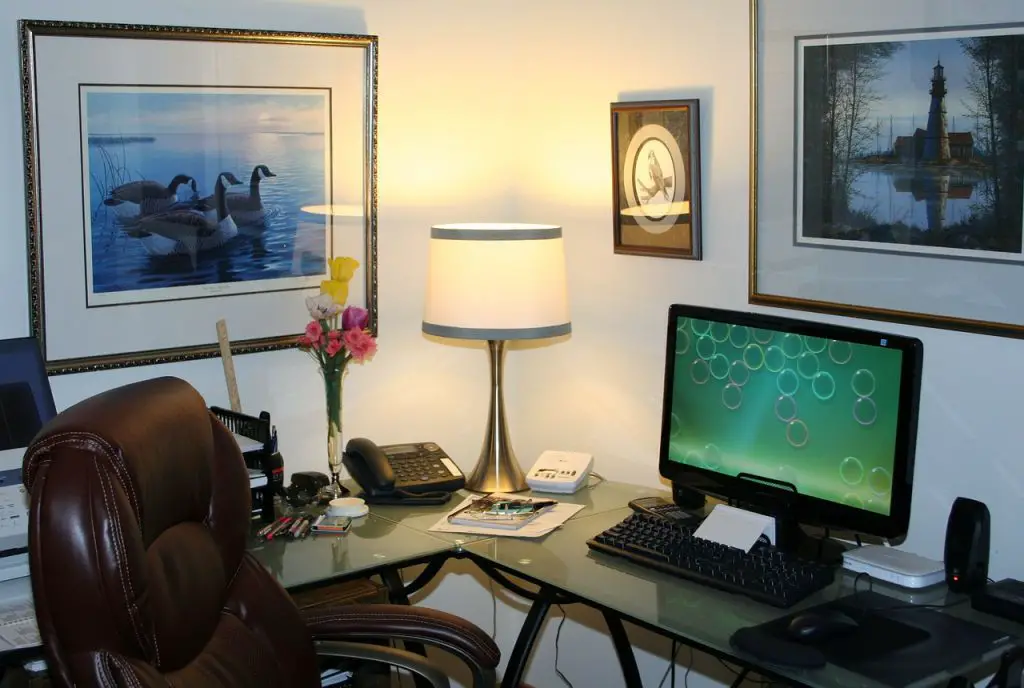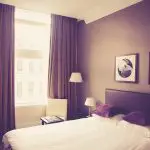
If you are a person who is tired commuting to work every day, then working from home can be your ultimate dream.
There are many benefits to working from home. You can be your own boss in terms of determining your own working schedule.
Working from home cuts the hours in commuting and therefore allows you to spend more hours on your work.
When I decided to work from home, I exactly reaped these benefits. But there was a great problem. Finding the perfect time to work is challenging due to the disturbing noise coming from the outside and from the adjacent rooms (not to mention the noisy neighbors).
So obviously, the ultimate solution is to soundproof my existing home office. Since it was my first time doing a soundproofing project, I encountered challenges.
But because I really wanted to have a quiet space for my work, I forced myself to find ways. Fortunately, by researching and doing it myself, I figured it out.
In this article, I will be sharing everything that I have learned throughout the whole process. I hope that this simple post will help you soundproof your existing home office too.
The best thing about the steps I’ll be sharing here is that they are easy and doable. You don’t need an expert in soundproofing to accomplish the project.
And most importantly, you don’t need to spend thousands of dollars on the project. For just a few dollars, you can execute the project.
If there is one thing that you should remember is that every soundproofing project is different. This means that the costs and soundproofing materials needed can be varied.
However, if you are smart and creative, you can save a lot of money. This post will not only teach you how to soundproof an existing home office but also share cheap soundproofing tips.
The success in your soundproofing project depends on whether or not you understand the very goal. This is because there are two main outcomes you want to achieve here: sound deadening and sound blocking. These two are very different.
The Difference between Sound Deadening and Sound Blocking
Sound deadening is the process of inhibiting the sound from echoing around the room. This is what recording studios are doing. Echoes ruin the quality of the recordings. The solution to this is to use pointed foam panels and sound deadening curtains to capture the best sound quality when recording – or just to make the room quieter, so you can concentrate. These curtains work amazingly well!
These sound-deadening materials inhibit the sound from bouncing back and forth inside the room. This is the main reason why you see these materials in recording studios.
But as the name suggests, sound-deadening materials are not effective in blocking the outside noise from entering the room. They work well in keeping the good quality of the sound but are ineffective in keeping an office quiet.
Sound blocking, on the other hand, is the process of inhibiting the outside sound or noise from entering the existing home office. This process in most cases is challenging especially when working with an existing office.
But it is easier when you are building a new room. You can simply instruct the builder or your carpenter to use sound-blocking materials such as a sound-blocking drywall to guard the room against outside noise.
How to Soundproof an Existing Home Office
Because you learned the fact that sound blocking the existing home office is more difficult than building a new one, you might be thinking that the whole process is difficult.
But the truth is that there are available techniques you can implement to the soundproof an existing home office. And as promised, I will help you through those techniques.
So, without further ado, let’s dive into the actionable soundproofing tips.
Step #1: Plug the Holes
Effective soundproofing stems from understanding how the sound works. Well, you might already know it. The noise is a soundwave that travels through air, water, and other media.
The soundwave is very good at finding the outlet or space to pass through. If you have a room that is completely sealed, it is impossible for the sound to exit or enter the room. Simply put, if there is no passage, the sound couldn’t pass through.
That said, the first line of defense against noise as far as soundproofing an existing home office goes is plugging all the holes.
Small holes on the wall are enough to sabotage the quietness of the office. To plug the holes, you can use green glue noiseproofing compound (which comes in a tube very much like caulking compound) or other caulking materials, to seal all the gaps.
Plugging all the holes on the wall could help the soundproofing success. But of course, this is not enough. Other than holes in the wall, there are other sound passages that you need to take into consideration especially the door. The next step will help this case.
Step #2: Soundproof the Door
As mentioned, plugging the holes on the wall might not be enough. This is because there are other parts of the room that offer passages for outside noise. The door is one of them.
Needless to say that the door is challenging to soundproof. The challenge can be dependent on the type of door you are dealing with. More solid doors require less effort than the less solid doors.
One of the quickest ways to soundproof the door in your existing home office is to use this inexpensive self-adhesive draft weatherstrip. This soundproofing material does a very good job of sealing all the gaps around the door. (Check out this article on how soundproofing foam works.)
The reason why I like this material is that it is easy to apply due to its self-adhesive feature. You can easily stick the weatherstrip to the door jamb (top and both sides).
In some cases, after finishing this process, the room should be quieter. But there are instances where using the weatherstrip is not enough. Remember the gap between the bottom of the door and the surface of the floor? That gap allows the outside sound or sound to enter.
One of the quick ways to solve this problem is by using the Sound Controlling Door Bottom. This door bottom has an automatic mechanism that seals the bottom gap as the door closes and raises as the door opens.
This door bottom is easy to install. You just need to attach it to the bottom of the door and you’re good to go.
For the carpeted floor, you can use a draft stopper. This strip wraps around the bottom of the door, blocking air and sound movement from both sides, and just glides on the surface of the carpet, leaving no room for the sound to enter.
However, not all doors are easy to soundproof using the mentioned techniques. Doors that have a hollow core are more challenging. They are not good at blocking the entering sound.
If this is your case, changing the hollow-core door with a solid-core door is a better idea. Have a carpenter to make a solid door for you.
Lastly, if changing the door is not possible in your case, you can use a soundproofing blanket (click here to see the product on Amazon). This blanket is designed to block the outside noise from entering the office.
Step #3. Soundproof the Air Vents
Another challenging part of soundproofing an existing home office is soundproofing the air vents. If this part is overlooked, the project may not be successful.
Air vents are holes on the wall where the sound could readily pass through. So if they remain soundproof, you still have the source of the noise.
Fortunately, there are possible ways you can apply to soundproof air vents. One quickest way is to use the expanding foam. This material will block the sound from entering the room.
A sound maze is also a good strategy. You can build it in the vent system to block the sound traveling from the outside. This technique does not interrupt the airflow while maintaining the home office quiet.
Step #4: Soundproof the Windows
The windows are some of the parts of the room that are challenging to soundproof. The common reason behind this is that the windows have a weaker structure.
But if you are living nearby a busy street, you may find it disturbing. Because of their weak structure, the sound could pass through them and enter the home office.
Fortunately, there are ways you can block the outside noise from entering the room. You can choose between cheap and expensive materials to do so.
The expensive way is to replace the old windows with soundproof windows.
The cheaper and easier way, on the other hand, involves using sound absorbing curtain. These curtains block out light as well as sound, which may be an additional advantage.
You just need to hang these curtains from the ceiling to the floor to maximize the result. Sound-absorbing curtains could greatly help to block the outside noise.
Step #5: Sound Deaden the Floor
You might not consider it yet but the floor can be the cause of echoed noise. This usually happens when you have a solid floor. No matter how well you soundproof the wall, windows, and door, the floor could cause echoes.
I found the same challenge before. The concrete flow caused the noise to bounce back and forth around the room.
The best thing you can do in this case is to use soft rugs and put them on the floor to inhibit the sound from echoing.
Laying soft materials on the floor should help the soundproofing success of your existing home office. If you’ve ever been in a room with hardwood floors before and after the furniture and rugs were brought in, you’re aware of what a huge difference in echo you experience in an empty room with a hard floor.
This technique, however, may not be so effective when working with floors above the garage or laundry room. The sound coming from these rooms can be strong enough to distract you in the home office.
When working with an existing home office above the noisy rooms, the use of an acoustic board can be more appropriate.
Acoustic boards are designed to absorb the sound. You can install the acoustic board under the carpet for maximum outcome. It helps the carpet to reduce the disturbing sound.
Step #6: Work on the Ceiling
If you are living in an apartment, the source of the problem can be a little bit different. Sometimes the source of the noise is the neighbors living above you. In this case, soundproofing the ceiling is the best remaining option.
Soundproofing a ceiling can be different from the previous soundproofing techniques I shared above. This requires a frame on which the soundproofing materials can be attached to later on.
So prior to the actual process of soundproofing the ceiling, you need to have the frame installed. Then after making sure that everything is in place, you can now attach the drywall to the frame.
A drywall is a material commonly used for constructing interior walls and ceilings. Not only this material absorbs sound but also provide resistance to fire.
When soundproofing a ceiling of an existing home office in an apartment, drywall can be effective if installed correctly. It can reduce the noise or sound that enters the room.
In addition, you can also use an acoustic ceiling panel. These panels are designed specifically for sound absorption.
Whichever you choose for soundproofing your ceiling, make sure that you pick a material that has a complementing color with the internal design. If you are into maintaining the aesthetic value of the home office, pick the right color.
Also, if you live in a rental property, you should check with your landlord before installing permanent materials anywhere. Floor coverings that aren’t glued and rugs can be removed. Acoustic panels that have been carefully mounted on the walls may also be removable without damaging the walls. Structures such as inner walls and frames for acoustic ceiling tiles may not be easily removable without causing damage.
Step #7: Apply Sound-Absorbing Paints and Wall Foams
I already have mentioned that the first thing you should be doing as far as soundproofing an existing home office goes is to plug all the holes.
But did you know that there is a sound-absorbing paint for soundproofing a room? Yes, you read it right. It is surprising to know that these materials exist.
Is it effective? It is. In fact, it reduces about 30% of the noise entering the room. It’s perfect for minimizing sound where more expensive options aren’t needed. And, you can even take it to a paint store, and have it tinted to just the right shade, since it’s considered a “white base”.
In addition to this material, acoustic wall foams are also a great option. These foams help restrained the sound from echoing around the room.
For additional soundproofing techniques for an existing home office, you can add fabric paintings. These materials are not designed for soundproofing projects. But the fact that they are made of fabric, they can reduce the echoing sound too.
Fabric paintings are a great work of art. They will not only soundproof the room but also adds to the aesthetic feature of your existing home office.
Step #8: Use a White Noise Machine
Another additional technique you can use to lessen the noise in your existing home office is by using a White Noise Machine. This particular machine is inexpensive, and works great. It’s recommended almost anywhere people are writing about white noise machines. (We turn one on every night in our bedroom, so our dogs don’t hear the wildlife outside, and wake us up! It works very well, and they last for years, running constantly every night.)
White noise machines are designed to conquer all the disturbing noises from outside of the house. These machines produce a calming sound that will ease your ear and mind making your home office perfect working space.
There are many types of white noise machines out there that you can choose from. You can choose in terms of price. For me, an inexpensive white noise machine can be enough to make a room suitable for work.
For the best result, place the machine near the areas where the noise enters. If the window is the weak spot of the room (where the outside noise could readily enter), place the white noise machine under it.
You can also adjust the volume of the machine to maximize the outcome. Doing these simple strategies can do a huge difference in your existing home office.
Step #9: Preventing Structural Sound
If all the steps shared above are not working for your existing home office, then maybe the next thing you want to try is to prevent structural sound.
A structural sound commonly stems from grinding hinges of the house, or garage door openers. If your home office is just above the garage, then structural sound can be your problem. Sound travels in a vibration form that will, in turn, disturb you while working.
There is a great way to suppress structural sound from traveling all over the house. The most common one is the isolation technique.
This strategy involves building another layer on the wall. The space between layers will capture the sound and therefore inhibits it from traveling.
This process, however, can be arduous depending on the existing structure of the home office. If you can’t do it alone, then hiring someone who can carry out the job is the best idea.
All you have to is to buy the needed materials for the project. In my home office, I used sound channels and sound clips. These materials are great tools in soundproofing an existing home office.
On How to Soundproof an Existing Home Office
Soundproofing an existing home office can be challenging and more difficult than building a new home office. But this does not mean that the process is impossible to do.
There are techniques and materials you can use to achieve your ultimate goal. In fact, there are more available ways than you think to soundproof your home office.
Creativity is the only limit. If you are creative enough, you can come up with your own techniques other than what I have shared in this post.
Nonetheless, I hope that this simple guide in soundproofing an existing home office will help you and your project.
To learn more about soundproofing, feel free to read my Soundproofing Guide.
Happy soundproofing!


